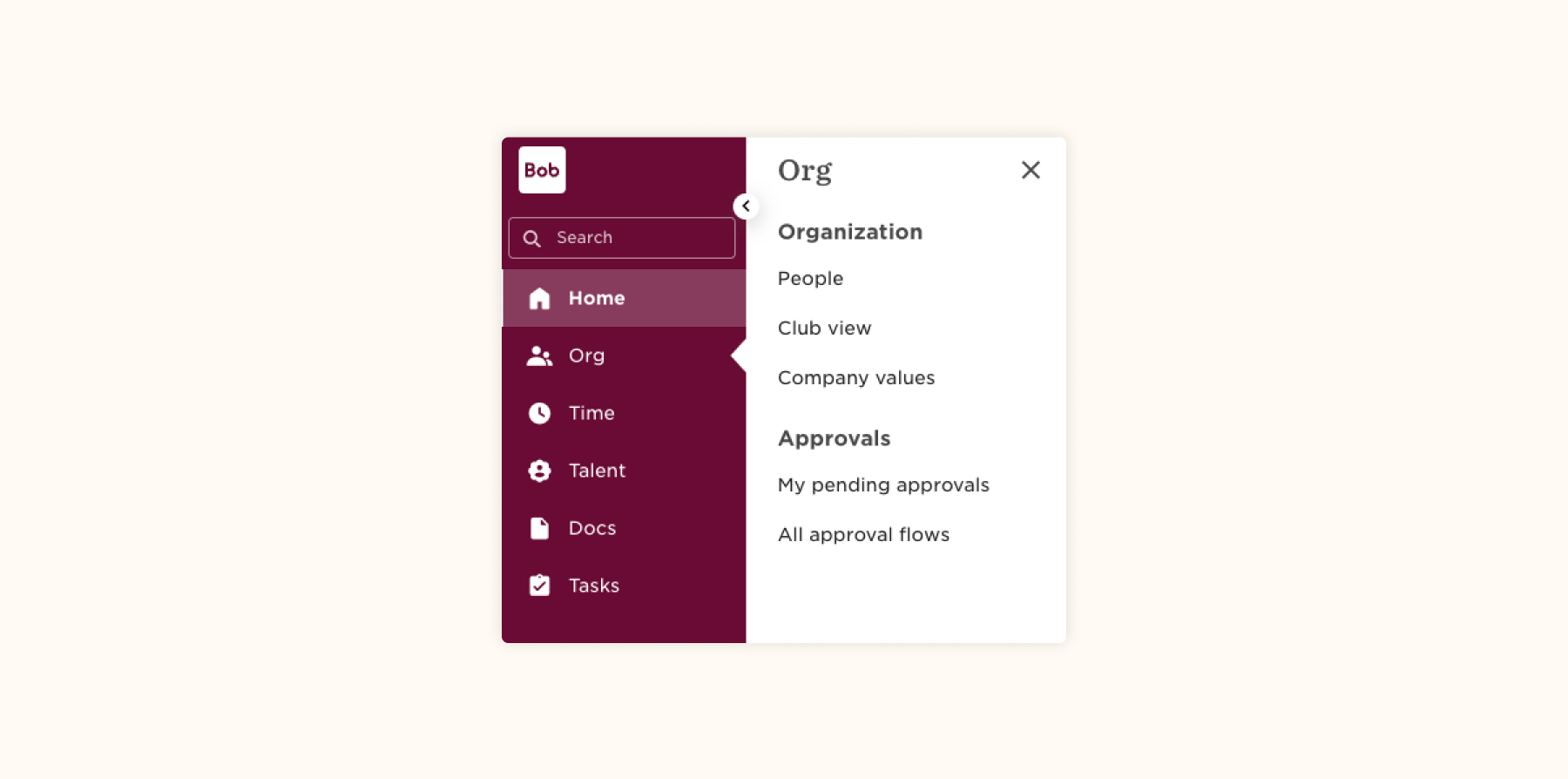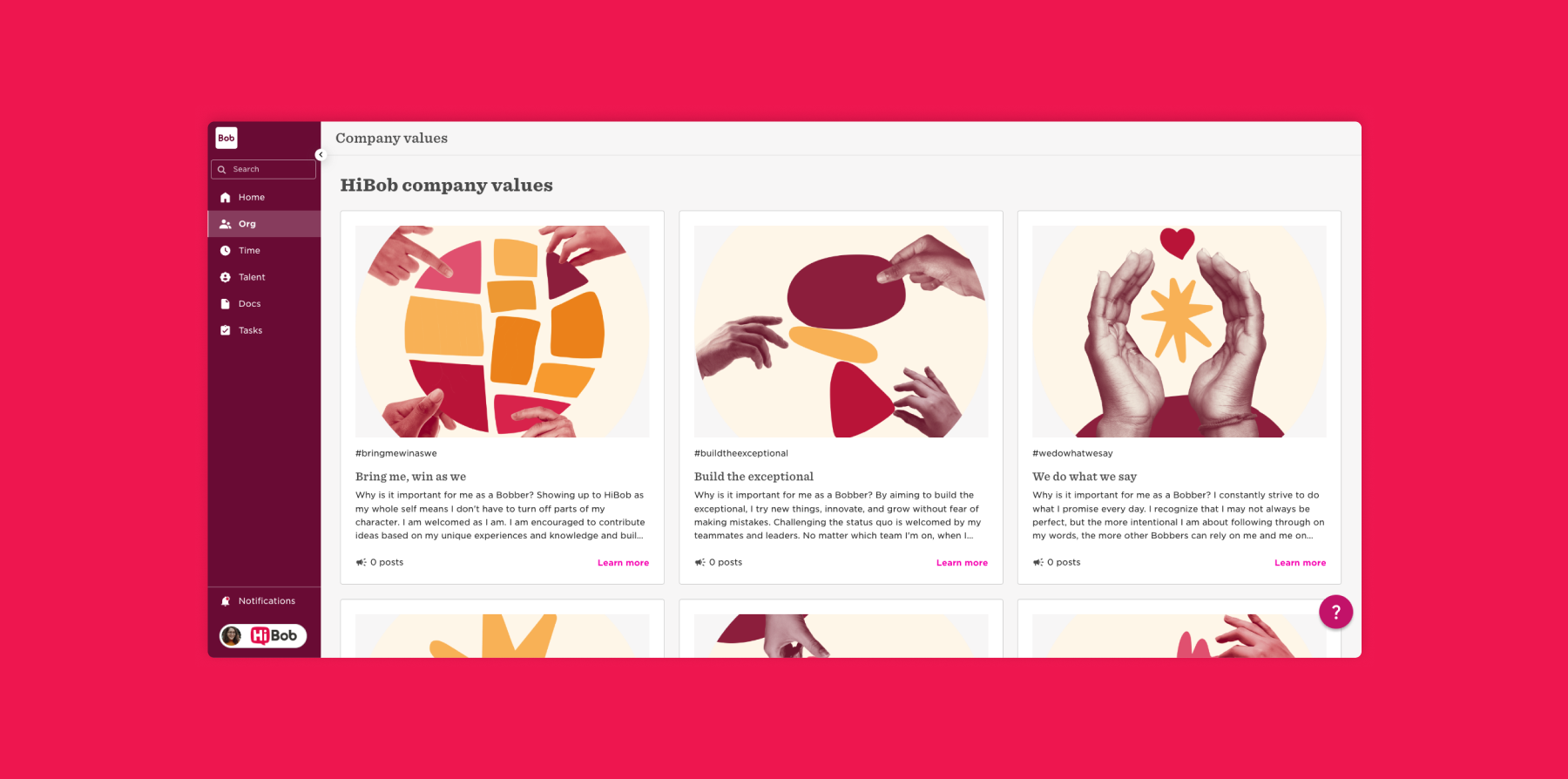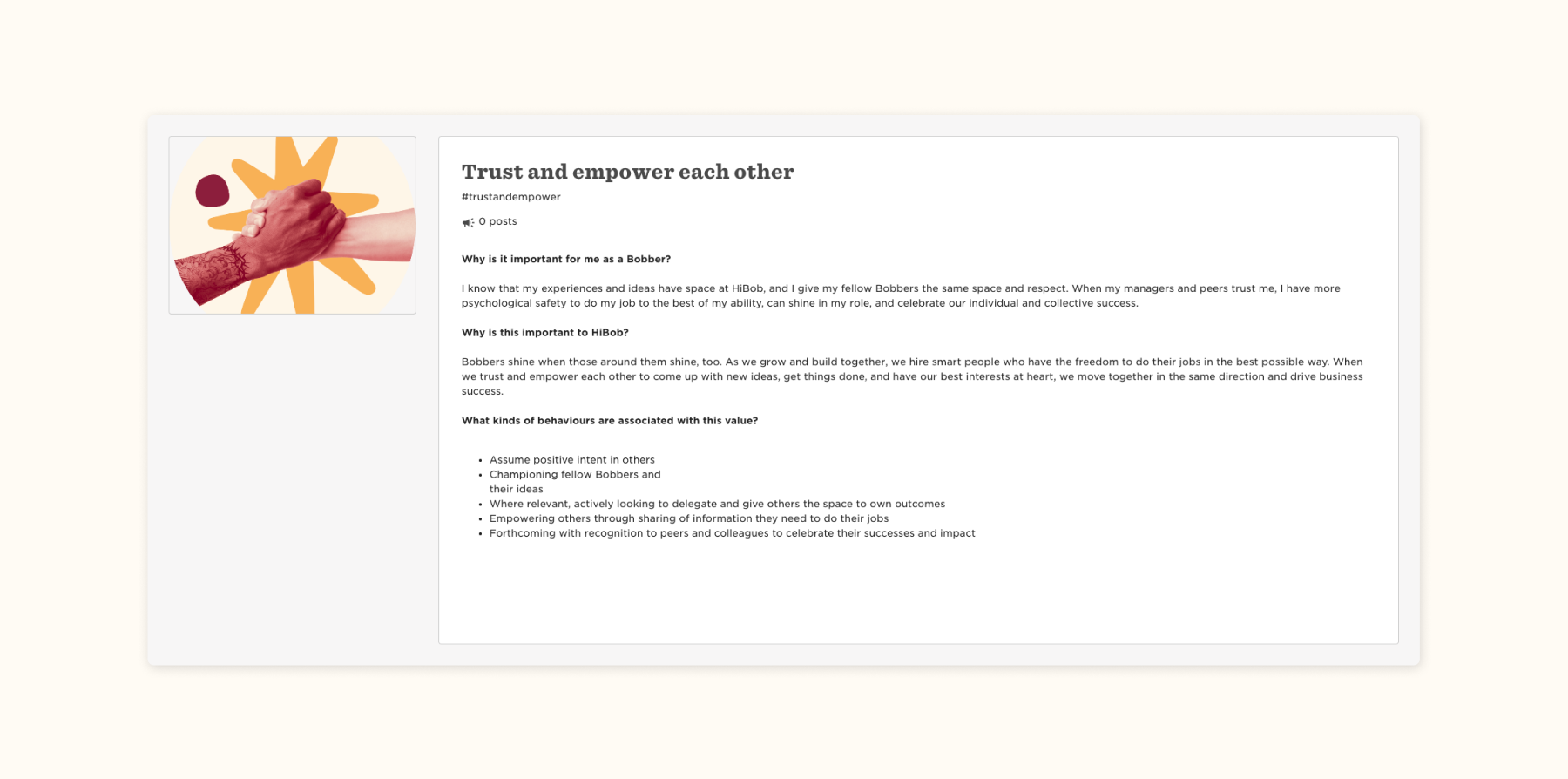Imagine the scenario. Your business has decided it’s time to create company values. You’ve conducted a thorough process, involved a range of stakeholders, wordsmithed, edited, and refined. You’re confident the outcome captures your company’s DNA. Your values are ready to go. So what next?
In many ways, creating company values is the easy bit. It’s creative and engaging, especially when colleagues volunteer to get involved. Now, the real challenge starts: How can you truly integrate your values into the day-to-day at your company?
The process can be challenging, and integrating and implementing values into your daily processes and culture on a practical level can be a very different experience from the one you had creating the values.
Wiring your values into the company’s operations is far from a ribbon-cutting moment. It’s a granular, detailed exercise that requires technology and automation to truly achieve scale and impact.
And it’s not just the process that is tough. HR professionals encounter resistance from colleagues when it comes to including values in the everyday. Some people still see values as a “fluffy” thing, unrelated to their goals. Fortunately, there is a wealth of sources to help you counter this cynicism.
The late Tony Shieh tackled this at Zappos and through his book, “Delivering Happiness.” Michael D. Watkins summarizes it succinctly in “What is Organizational Culture and Why Should We Care?” Here, Watkins places values at the heart of organizational culture. In summary, if we want a great culture and all the bottom-line benefits it brings, we need strong, behavior-based values and people to use them in their day-to-day work lives.
Embed core values across the employee lifecycle
Genuinely people-first company values show up in all moments of the employee lifecycle. This starts with the recruitment process, even before someone joins.
Candidates pay attention to a company’s values when they search for positions. Values play a significant role in candidates’ application decision process. Modern professionals applying to jobs aren’t looking for values just to see if they exist. They want to see if your company values resonate with them. They are asking themselves, “Is this company aligned with the behaviours I hold to be important?” If the answer is “no,” there’s a good chance they won’t apply.
The best way to attract and retain top talent starts with your approach to organizational values:
- When someone joins, do they know your values, how you created them, and how they are used in the day-to-day at your organization? Are your values built into their onboarding experience?
- Are you using your values to celebrate successes, debrief failures, and set goals?
- As your team member grows their career, are you promoting bottom-line performance and people who champion the behaviours associated with your values?
- At key moments, are your values part of the planning and approach? Values that genuinely resonate with people inspire how the business communicates at scale, deals with change, and rewards and recognises each one of your people.
Promote values-based employee engagement
Modern professionals implicitly understand that values are essential for creating a shared language that can unite people across an organization. The true measure of success is when team members (old and new) opt to integrate your company values into their daily work routines without facilitation. So, how do we achieve this?
We lay the foundation for a values-based company culture where team members take a hands-on approach to engagement at critical moments (without intervention) now and in the future. This approach helps people build their values-based workplace “muscle” and makes integrating values into everyday processes second nature.
How to use Bob Values every day
In this section, I’m going to present real-world examples of how to integrate your values into your people processes. To start, I’ll use the company values I’m most familiar with as one of HiBob’s senior directors of people and culture. HiBob’s company values are:
- Bring me, win as we
- Build the exceptional
- We do what we say
- Trust and empower each other
- Interact with transparency and openness
- Grow through what we go through
These values live in Bob where everyone in the organization (HR, admin, individual contributors) can access them whenever they want, hear why it matters to the company, why it’s important to them, and see what positive behaviours are commonly associated with each one.
Where are they?

What are they?

How do I learn more about them?

Using HiBob’s values, let’s take a look at how HR leaders and managers can use the Bob Values feature in four common, everyday scenarios.
First, imagine you’re a newly promoted team leader reporting to a director.
1. Apply your values to goal-setting
You’re a new people leader sitting down with your director to set your goals for your new role. You share with your director that you’re concerned about letting go of specific tasks as you make the transition from being an individual contributor to a team leader.
You set a goal to “delegate with impact” and decide that the “Trust and empower each other” value will be an important North Star to help you reach it. You capture the goal in Bob and reference it as the value you’ll lean on to achieve this goal.
2. Apply your values to 1-on-1s
This is where you track your progress. As you meet weekly with your director, you paste your goals and associated values in your 1-on-1 notes. These serve as a reminder to actively work on the new skills to thrive in your role.
In your first months as a new leader, you realise (almost subconsciously) that you are slipping into a “let me just do this for you” mindset. But your goal is to delegate with impact. You are NOT trusting and empowering your team.
Regularly tracking the progress of your goal in light of the “Trust and empower each other” value highlights your blind spot and motivates you to go into the next week with more self-awareness and commitment to change.
3. Apply your values to your semi-annual review
You sit with your director to review your progress over the last six months as a new people leader. Thanks to the goal-setting process, the subsequent 1-on-1 rigor around tracking goals, and honest reflection on whether you’re living the value, you’ve developed into an impactful delegator.
At times, impactfully delegating meant your team members tripped and fell. But, you gradually stopped jumping in to do the work for them. Instead, you were on hand to debrief them, help them learn from their mistakes, and guide their growth. Six months in, your team has provided feedback that they feel you trust and empower them.
Recommended For Further Reading
4. Shout out your values
One of your direct reports goes onto Bob the day after your semi-annual review and gives you a Kudos. They thank you for being their manager, supporting them through a key project they worked on, giving them the space to shine, and guiding them through each step.
They tag the Shoutout with #trustandempower.
This inspires other people in the organisation and reminds them that the company values are not separate from business impact: They drive it.
Values drive the best people-first cultures
Exceptional behaviour-based values inspire people in their daily tasks, projects, and work interactions. When businesses genuinely care about driving culture through organizational values, they infuse behaviour-based values into the employee experience.
Using people tech is the only way to achieve this at scale effectively. HR tech enables businesses and their people to apply values to day-to-day activities practically. It also helps connect the dots between the theoretical value and driving business success.
When our organization’s values are integral to achieving business goals, we can prevent those cynical sound bites of “those values were just meaningless words on the wall.” Instead, we will hear—and see—our team members share how they wouldn’t have achieved such a significant business impact if it weren’t for our company values. Values will be the drivers of exceptional employee experiences and organizational achievement.

From Toby Hough
Toby is the Sr. Director of People and Culture for Europe at HiBob, and has spent the last 10+ years in high-growth organisations from the London Olympics and Paralympics to Silicon Valley and London-based startups. When he’s not geeking up on the latest HR practices, you can either find him with his singing group or in the outdoors, sailing, cycling, and hiking!

